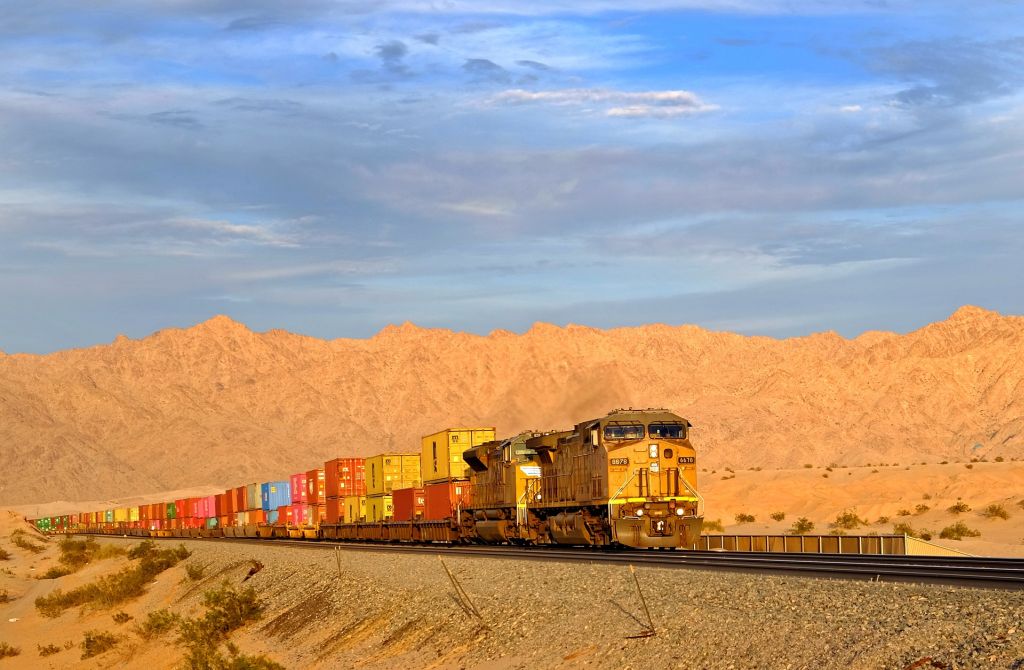“China’s loss is not Mexico’s gain”
The country continues to rely on an investment boom due to the decoupling of the USA from China. The potential has only been partially exploited.
by Alexander Busch, Latin America correspondent for Handelsblatt and Neue Zürcher Zeitung
Mexico has overtaken China as the U.S.’s trading partner for the first time this year – the first time since 2014, when China took the top spot in the U.S. trade balance. The volume of trade between Mexico and the U.S. is impressive, with $263 billion in goods exchanged from January to April. By comparison, Brazil and the U.S. traded only ten percent of the value with each other in the same period, at $26 billion.
So it all looks like the recent predictions for nearshoring between the U.S. and Mexico will come to pass: After Donald Trump’s administration launched a trade war with China starting in 2019 and began to decouple from Asia’s largest economy, many economists expected Mexico in particular to benefit.
U.S. companies would locate their suppliers closer to them to reduce the risk of disruption to production chains. The Inter-American Development Bank (IDB) estimated last year that nearshoring in Latin America and the Caribbean could lead to $78 billion in additional goods and services exports annually in the short and medium term. Mexico should contribute the largest share of this.
This has partially come to pass. Like exports from Mexico to the U.S., foreign direct investment in Mexico has increased in order to upgrade the country as a supplier to the U.S.
Nevertheless, nearshoring as a whole remains below its potential. This is because Mexico’s exports to the USA have grown less than from countries such as Vietnam, India or Taiwan. At the same time, Mexican exports are concentrated mainly on industrial raw materials and foodstuffs, in addition to vehicles and parts.
Industrial products or machinery have been less prominent in Mexico’s export portfolio to the US. Oxford Economics puts it in a nutshell: “China’s loss is not Mexico’s gain”.
There are several reasons for this:
The government of President Andrés Manuel López Obrador is not business-friendly. The left-wing populist president is blocking investments in sustainable energy, and the state is hardly investing in other infrastructure either. But foreign companies in Mexico increasingly need energy that has been produced sustainably.
In addition, Mexico’s industry still functions primarily as a “maquiladora”: companies import parts from the USA, have them assembled in Mexico and export the finished products back to the USA. In the process, local value creation is low.
It only works with cheap labor. But labor is becoming more expensive in Mexico, too. In addition, companies need fewer and fewer simple workers. But Mexico also has a shortage of high-tech workers.
At the same time, local companies and the state are investing too little. Investment by foreign companies alone is not enough to advance Mexico’s industry as a whole.
Individual trailblazers like automaker Tesla, which is now investing in a $5 billion plant near Monterrey, or a manufacturer like BMW, which plans to produce cars with electric powertrains and batteries in Mexico, are important for Mexico’s strong automotive industry to remain competitive.
But they are not enough for Mexico to replace both China and other Asian producers as an industrial high-tech location. Oxford Economics analyzes: “The lack of domestic (public and private) investment prevents the country from taking full advantage of the nearshoring trend.”








